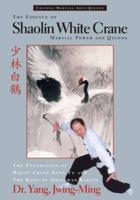Publisher's Synopsis
This book explores the ancient Egyptian martial art of Tahtib, tracing its origins, evolution, techniques, and cultural significance. Beginning with its use as a form of military training in ancient Egypt, the book examines how it became a structured practice for warriors before transitioning into a ceremonial and entertainment tradition. It explains the techniques involved, including footwork, strikes, and defensive movements, and how these skills were passed down through generations.
The book highlights the philosophy behind Tahtib, focusing on discipline, respect, and the ethical principles that guide its practice. It discusses the role of music in Tahtib performances, where rhythmic drumming and flute melodies create a synchronized exchange between fighters. The decline of Tahtib due to modernization and changing military strategies is explored, along with the efforts to revive and preserve it as part of Egypt's cultural heritage.
The resurgence of Tahtib in modern martial arts, its adaptation for self-defense, and its recognition as an important cultural practice are covered in detail. The book also looks at how Tahtib is represented in media, including films, stage performances, and video games, and how it continues to be practiced in Egypt and internationally.
As Tahtib moves into the future, efforts to standardize training, develop competitions, and integrate it into global martial arts communities are shaping its continued presence. Whether as a historical tradition, a competitive sport, or a means of preserving cultural identity, Tahtib remains an enduring practice that connects the past with the present.










